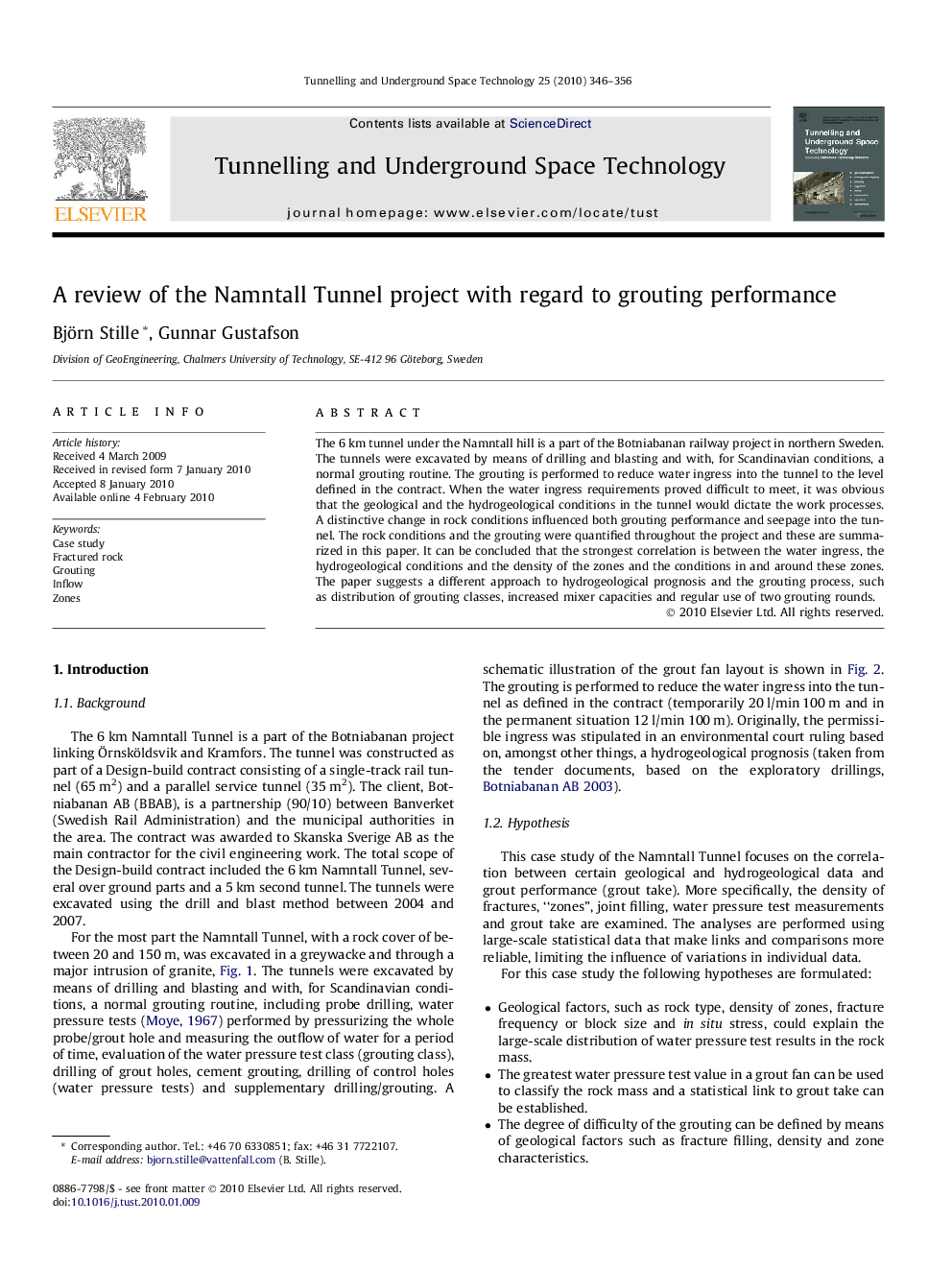| Article ID | Journal | Published Year | Pages | File Type |
|---|---|---|---|---|
| 310863 | Tunnelling and Underground Space Technology | 2010 | 11 Pages |
The 6 km tunnel under the Namntall hill is a part of the Botniabanan railway project in northern Sweden. The tunnels were excavated by means of drilling and blasting and with, for Scandinavian conditions, a normal grouting routine. The grouting is performed to reduce water ingress into the tunnel to the level defined in the contract. When the water ingress requirements proved difficult to meet, it was obvious that the geological and the hydrogeological conditions in the tunnel would dictate the work processes. A distinctive change in rock conditions influenced both grouting performance and seepage into the tunnel. The rock conditions and the grouting were quantified throughout the project and these are summarized in this paper. It can be concluded that the strongest correlation is between the water ingress, the hydrogeological conditions and the density of the zones and the conditions in and around these zones. The paper suggests a different approach to hydrogeological prognosis and the grouting process, such as distribution of grouting classes, increased mixer capacities and regular use of two grouting rounds.
